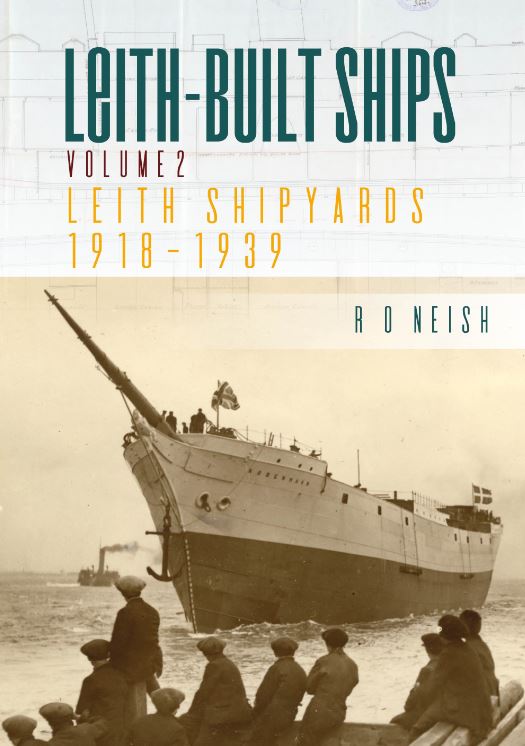|
This book, published in 2021, is the second in a series of a comprehensive four book project that covers the history of the shipyards of Leith and the Leith-built ships that were constructed there to find service all over the world. This volume carries straight on from the first book that told the story up until the end of World War I, and takes us through the post WW1 years, into the difficult years of the depression of the 1920s and the even more difficult years of the early 1930s, a decade of course that was to culminate in the start of the global conflict of World War II.
Like the first book, the author’s personal experience of being in the working environment of Leith shipyards is crucial to his understanding of not only the many stages and many trades that go into building a ship of any size, but also an obvious love of shipbuilding and still great pride in not only his own working skills, but the many different skills of everyone working alongside him. This book is the story of not only the ships constructed at Leith, but also the shipyards of Leith, and features the history of names that gave employment to generations of Leith workers. Names that include Cran & Somerville, Hawthorn & Co, and of course the “of its time” leader of the pack Ramage & Ferguson. This is also a story of acquisitions as one after the other, these names fell on hard times to be taken over by their neighbour on “ship-builders row”. Even the mighty Ramage & Ferguson was to eventually fail in the 1930s and be taken over by the “newcomer” Henry Robb, a company that was to dominate not only Victoria Dock, but Leith shipbuilding and Leith employment for decades to come. This book, like the previous volume, follows the history of the shipyards from their actual records of ship construction and we move forward as the ships are built, often finding the fates of many of the ships built in Leith. The fate of no ship built at Leith is more elusive though than that of the mighty Kobenhavn. In her day, this was the largest sailing ship built at a British yard (with engines if needed). Her sails alone covered an area of over 52,000 square feet with over 23 miles of rope for the running rigging. On her 9th voyage between Buenos Aires and Australia this incredible ship failed to reach her end destination and, to this day, no confirmed wreckage has ever been found. The story of the Kobenhavn is a stark reminder of just how much of a risk the open seas were (and still are) to any ship, and we sometimes take for granted the loss of life, even in peacetime, that was to be the price that all too many sea-farers paid for their wages. This book covers times of plenty just after WWI when so many ships needed either repaired, re-purposed back to their original purposes (many had been requisitioned by the war office for other uses), or new orders to replace the millions of tons of shipping lost during the war. Still there was this never ending paradox of the skilled shipbuilder; working fast enough to keep up with a schedule that often ensured the ship be completed in the fastest time keep building costs down and profits high for the buyers, whilst at the same time knowing that if another ship was not waiting to be built that they were “laid-off” with no wages until more work came along. Of course, Health and Safety regulations as we now know them were almost non-existent in these days too, and the job, which involved working outdoors in all weathers, was a hazardous working environment to be in if you were not very careful, or often just very lucky. This is also the story of a time when world freight went by ships and not air transport and when cargo had to be unloaded and did not arrive containerised at the docks. As with Volume 1, the author has a light touch of writing history and you can read this book as either a general introduction to the ships and the shipyards or if you have a deeper level of interest move further into the history of the ships with written and photographic records that are obviously the result of much detailed research. The shipyards are all gone from Leith now, and the streets that once filled the air with the sounds of thousands of workers’ footsteps and voices have long ago fallen silent. Leith however is a place where history often stays in one form or another, and Leith Victoria AAC founded over 100 years ago in a hut at Ramage & Ferguson is still in Leith (having moved home a few times over the years) and known to generations simply as Leith Victoria Boxing Club. Review by Tom King (c) 2021 ARTS REVIEWS EDINBURGH Comments are closed.
|
AuthorWrite something about yourself. No need to be fancy, just an overview. Archives
December 2021
Categories |

 RSS Feed
RSS Feed